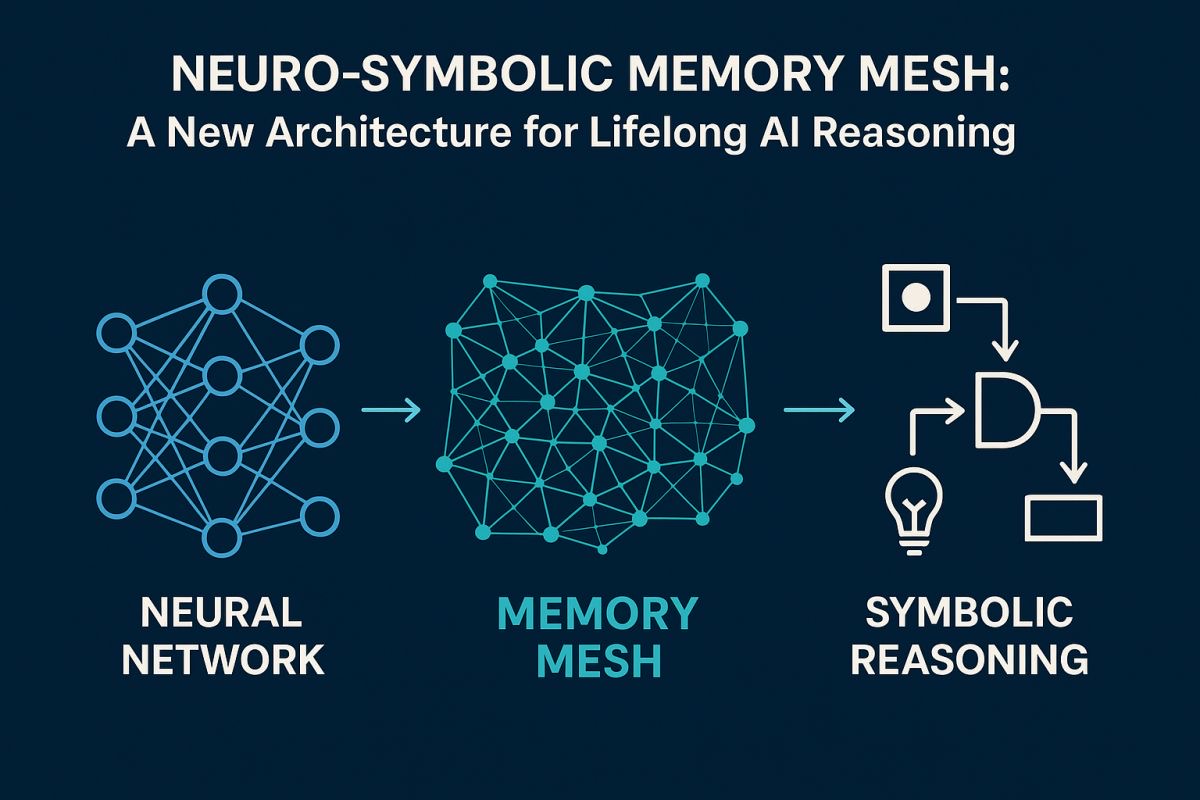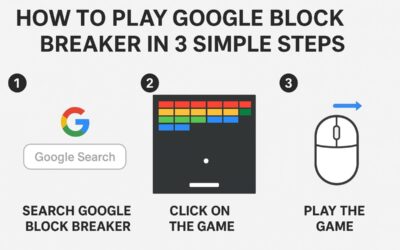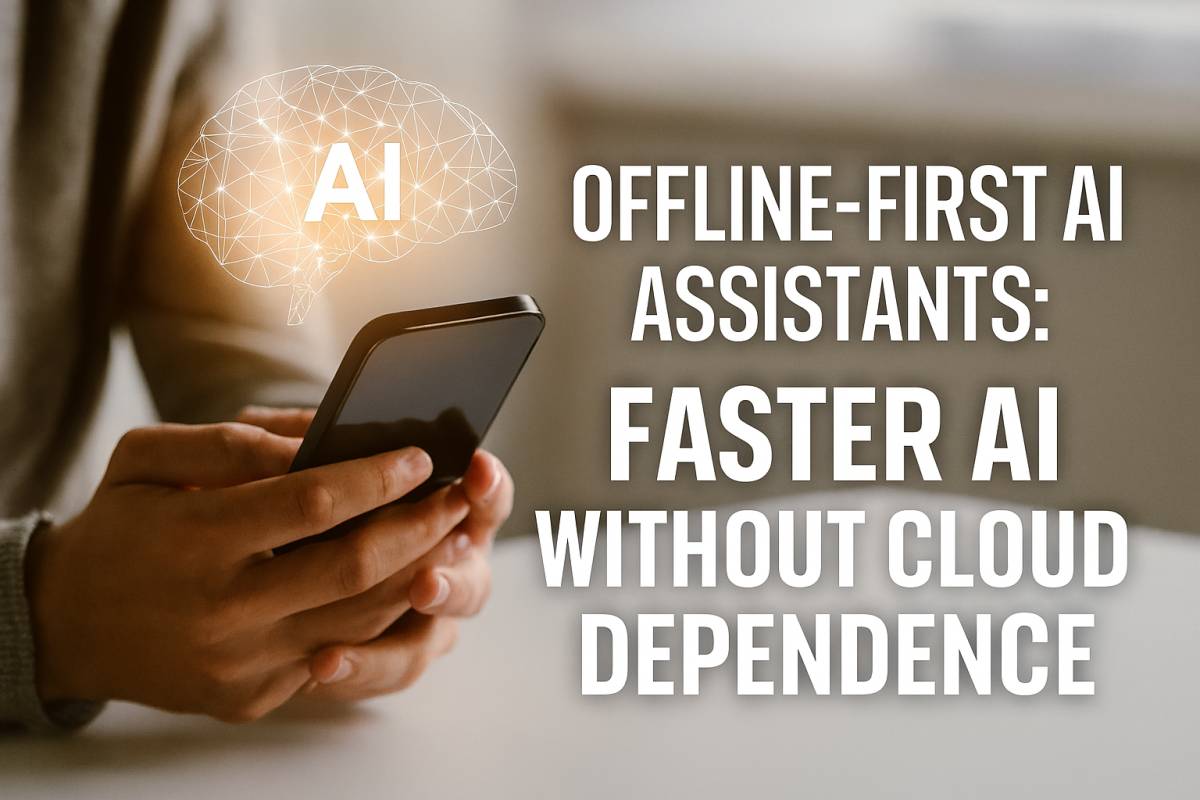Neuro-Symbolic Memory Mesh: A New Architecture for Lifelong AI Reasoning

A Neuro-Symbolic Memory Mesh (NSMM) is a proposed AI architecture that combines neural networks’ ability to learn from data with symbolic reasoning’s ability to apply logic and rules, all connected through a shared persistent memory layer. This design aims to let AI systems continuously learn new information, retain old knowledge without forgetting, and reason about the world in a human-like way.
Unlike today’s models, which often “forget” older data when retrained, an NSMM could store, organize, and update knowledge over time like a growing semantic network—enabling lifelong reasoning. This is a step beyond current AI systems that are either powerful but opaque (neural) or interpretable but brittle (symbolic).
Why Current AI Architectures Fall Short
Most existing AI systems are single-paradigm in nature:
- Neural networks excel at recognizing patterns, generating text, and making predictions from large datasets. But they:
- Lack explainability (we can’t always tell how they reached a decision)
- Struggle with incorporating new facts without retraining
- Suffer from catastrophic forgetting — losing old knowledge when learning new data
- Symbolic AI systems use logic rules and knowledge graphs to reason, but they:
- Can’t easily learn new patterns from raw data
- Break down in uncertain or dynamic environments
- Require heavy human engineering of rules
Neither approach alone can support lifelong learning or robust reasoning at scale.
This is where a Neuro-Symbolic Memory Mesh enters as a hybrid solution.
The Core Architecture of a Neuro-Symbolic Memory Mesh
An NSMM would integrate three major layers:
1. Neural Perception Layer
- Processes sensory input or raw data (text, images, audio, etc.)
- Extracts patterns, embeddings, and probabilistic representations
- Continuously adapts from experience like today’s deep learning systems
2. Symbolic Reasoning Layer
- Holds explicit facts, logical rules, and ontologies
- Supports deductive and inductive reasoning
- Can explain its decision paths clearly to humans
3. Persistent Memory Mesh
- A shared, dynamic knowledge graph connecting outputs from both neural and symbolic layers
- Stores experiences as linked concepts and relations, enabling context-aware retrieval
- Continuously expands and reorganizes itself as the AI encounters new data
This mesh acts as a long-term semantic memory. Neural insights are encoded as structured concepts, and symbolic logic is grounded in real-world patterns.
How It Enables Lifelong AI Reasoning
Here’s how a Neuro-Symbolic Memory Mesh overcomes current limitations:
- Continuous Learning: New data updates the mesh without overwriting older knowledge.
- Knowledge Retention: Semantic links prevent catastrophic forgetting by anchoring concepts.
- Explainability: Symbolic reasoning traces decisions through transparent logical steps.
- Adaptability: Neural modules can still adapt to new patterns or domains quickly.
- Cross-Domain Thinking: The mesh integrates knowledge from diverse fields into a unified reasoning space.
This means an NSMM-powered AI could evolve knowledge like a human—layering new insights on top of older experiences while maintaining logical consistency.
Real-World Applications of NSMM
Although still conceptual, an NSMM could transform multiple domains:
Healthcare
- Lifelong medical assistants that accumulate patient history, new research, and real-time sensor data to give personalized recommendations.
- Explainable diagnosis engines combining statistical risk analysis with medical guidelines.
Education
- AI tutors that remember a student’s entire learning journey and adapt content to their cognitive style while explaining the logic behind answers.
Robotics
- Autonomous robots that reason about cause-effect, recall past tasks, and adapt to new environments without full retraining.
Business Decision Support
- Corporate AI advisors that learn organizational context, market dynamics, and historical data to guide strategy with explainable logic.
Knowledge Preservation
- Capturing the reasoning style and domain expertise of human experts before they retire, preserving their knowledge for future use.
Challenges and Open Questions
Despite its promise, building a Neuro-Symbolic Memory Mesh faces serious challenges:
- Scalability: Can a dynamic mesh store and update billions of knowledge nodes efficiently?
- Alignment: How to prevent contradictions between neural inferences and symbolic rules?
- Safety: Could persistent memories encode harmful biases if not monitored carefully?
- Standards: No universal format yet for linking neural embeddings with symbolic graphs.
- Ethics & Privacy: Who owns the long-term cognitive memories the system accumulates?
Solving these challenges will require collaboration between experts in
Artificial Intelligence,
Cognitive Science,
Knowledge Representation, and
Machine Learning.
Why NSMM Could Be the Path Toward Artificial General Intelligence
True AGI requires both flexible learning and logical reasoning, plus long-term memory that grows without forgetting or breaking.
- Neural systems give flexibility
- Symbolic systems give reasoning
- A memory mesh gives persistence and structure
Combining all three could finally produce machines that learn, think, and explain like humans do.
This is why NSMM is gaining interest as a blueprint for the next generation of AI architectures, especially for long-term autonomous systems.
Conclusion
A Neuro-Symbolic Memory Mesh represents a bold step beyond current AI paradigms.
By merging neural perception, symbolic reasoning, and persistent semantic memory, it offers a path toward lifelong learning, explainable decision-making, and true cognitive growth in AI systems.
While still early in concept, its potential impact across industries—healthcare, education, robotics, and beyond—makes it one of the most promising frontiers for AI research in the coming decade.









